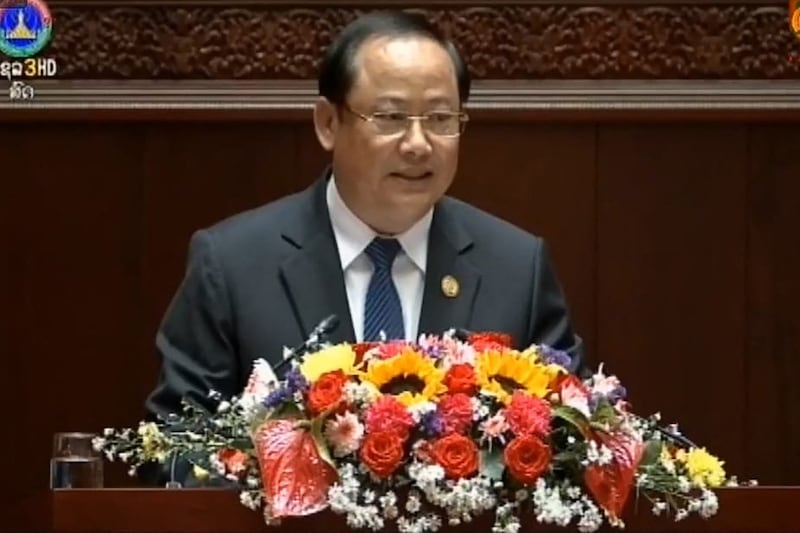Laos’ new Prime Minister Sonexay Siphandone began his term promising to “raise the spirit of the revolution to the highest level,” and top economic officials aim to rein in surging inflation and spur growth amid hopes of a recovery in tourism and loosening travel restrictions, particularly from China.
But with inflation nearing 40 percent, rampant corruption, and many people forced to get second jobs to make ends meet, ordinary residents expressed little confidence in the new leader or the economy’s prospects.
“Some Lao people have hope that the new prime minister will solve high inflation, the kip’s devaluation and rising prices,” said a truck driver from the northern part of the country. “But it is just empty hope. They just want him to get the role, and maybe something will change since the previous government was unable to resolve the problems.”
Khamjane Vongphosy, the new minister of planning and investment, predicted the economy would grow 4.5% amid renewed tourism this year. He said monetary officials would aim to cap inflation at 9%, stabilize the country’s exchange rates and increase the money circulating in the economy in the upcoming year.
In addition to tourism, the government will prioritize export-based industries in 2023, he said, and crack down on corruption that many see as the main cause driving economic collapse.
“The first priority of the Lao government’s social-economic development plan is to make economic growth sustainable by setting up production bases in the country for export,” Vongphosy said. “The second priority is to limit state budget expenses, improving management in state investment enterprises to make profit and control losses.”
Military, not economic training
For his part, the new prime minister, sworn in on Dec. 30, vowed in his inaugural speech to give his utmost for the country.
“I promise that I will raise the spirit of revolution to the highest level at all times and with the members of the government I will do my duty as best as I can under the constitution and laws of our country," Siphandone said.

But one Lao citizen didn’t see him as well-equipped to tackle Laos’ problems because Siphandone studied to be a military leader, saying that he got the top job because of his political connections.
“He doesn’t know economic management. He became prime minister through nepotism,” said the man, who asked not to be identified for fear of reprisal. “Most people do not accept his selection because he doesn't have the qualifications or experience to do the job as prime minister.”
A resident of Champassack province expressed measured optimism. “People are tired of the chronic problems … that are never solved for a long time, [so] they have hope in the new prime minister.”
Born in 1966, Sonexay Siphandone finished his B.A. degree at a military academy in Laos and studied political strategy before becoming governor of Champassack province in 1987. Prior to his appointment as prime minister, he had served as deputy prime minister and minister for planning and investment for over a year.
Corruption and inflation
A resident of Luang Prabang province told Radio Free Asia’s Lao Service that the government’s growth targets are hard to achieve without a crackdown on corruption.
“Daily expenses … and gasoline price are more expensive in both rural areas and the city,” the resident said. “I go to the market to buy food every day, and 100,000 kips (around U.S.$ 10) can’t buy anything.”
One Lao villager from Luang Namtha province said that the government’s target can’t be reached in reality due to a major lack of exports, as Laos imports most of its food and commercial products from neighboring countries. “The kip rating is low, gold prices are high, everything is up in the market, even goods produced in Laos are up.”
The depreciation of the kip over a protracted, multi-year economic crisis has resulted in the government taking on increasing amounts of foreign-owned public debts, with Laos buying foreign currencies to repay those expenses.

Another resident of Luang Prabang who operates a tourism business told RFA that although Laos was reopened for tourism in 2022, he saw little income because of the high inflation and the rapid devaluation of the kip.
“There are about 50-70 tourists every day who come and make income for tourism industries, but [it is still] not much,” he said.
Meanwhile, an official with the Asian Development Bank told RFA that the Lao government has failed to effectively enforce monetary policies controlling inflation and currency devaluation, despite the steps taken to increase growth in 2022.
“We forecast that the Lao economy will grow 3.5%, and the World Bank said that it will grow by 3.8%, based on a revival of tourism industries and the increase of foreign tourists coming to visit the country,” the ADB official said. “But inflation and the kip’s devaluation are making goods and merchandise more expensive for Lao citizens to buy.”
Translated by Sidney Khotpanya for RFA Lao. Written in English by Nawar Nemeh. Edited by Malcolm Foster.
